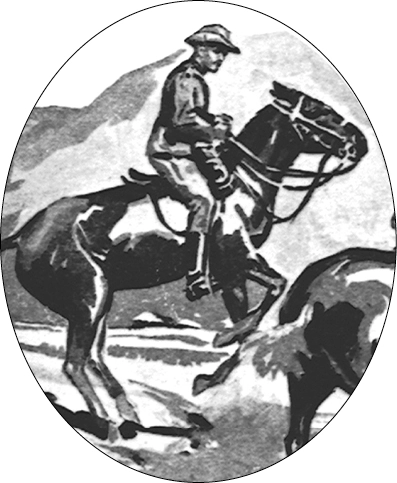He therefore speaks to us today as poignantly, beguilingly and movingly as he did when he made his first appearance seventy-six years ago.
On the dust-jacket of the first edition of Mafeking Road the following description of him appeared. Probably written by Bosman himself, it goes unrivalled to this day:
Each of the stories here presented is identified with the central character, Oom Schalk Lourens, an old Boer farmer, who has seen all the way into life, but whose experiences have not embittered him; and who retains, in spite of his Calvinistic outlook and background, and in spite of all his narrow backveld prejudices (and he has them in good measure), a warm kindliness of disposition, irradiating the stories he tells with a sincere and strangely moving humanity.
Craig MacKenzie
Johannesburg, 2006
The Touleier Years
(1930–31)

Makapan’s Caves
Kaffirs? (said Oom Schalk Lourens). Yes, I know them. And they’re all the same. I fear the Almighty, and I respect His works, but I could never understand why He made the kaffir and the rinderpest. The Hottentot is a little better. The Hottentot will only steal the biltong hanging out on the line to dry. He won’t steal the line as well. That is where the kaffir is different.
Still, sometimes you come across a good kaffir, who is faithful and upright and a true Christian and doesn’t let the wild-dogs catch the sheep. I always think that it isn’t right to kill that kind of kaffir.
I remember about one kaffir we had, by the name of Nongaas. How we got him was after this fashion. It was in the year of the big drought, when there was no grass, and the water in the pan had dried up. Our cattle died like flies. It was terrible. Every day ten or twelve or twenty died. So my father said we must pack everything on the wagons and trek up to the Dwarsberge, where he heard there had been good rains. I was six years old, then, the youngest in the family. Most of the time I sat in the back of the wagon, with my mother and my two sisters. My brother Hendrik was seventeen, and he helped my father and the kaffirs to drive on our cattle. That was how we trekked. Many more of our cattle died along the way, but after about two months we got into the Lowveld and my father said that God had been good to us. For the grass was green along the Dwarsberge.
One morning we came to some kaffir huts, where my father bartered two sacks of mealies for a roll of tobacco. A piccanin of about my own age was standing in front of a hut, and he looked at us all the time and grinned. But mostly he looked at my brother Hendrik. And that was not a wonder, either. Even in those days my brother Hendrik was careful about his appearance, and he always tried to be fashionably dressed. On Sundays he even wore socks. When we had loaded up the mealies, my father cut off a plug of Boer tobacco and gave it to the piccanin, who grinned still more, so that we saw every one of his teeth, which were very white. He put the plug in his mouth and bit it. Then we all laughed.
1 comment